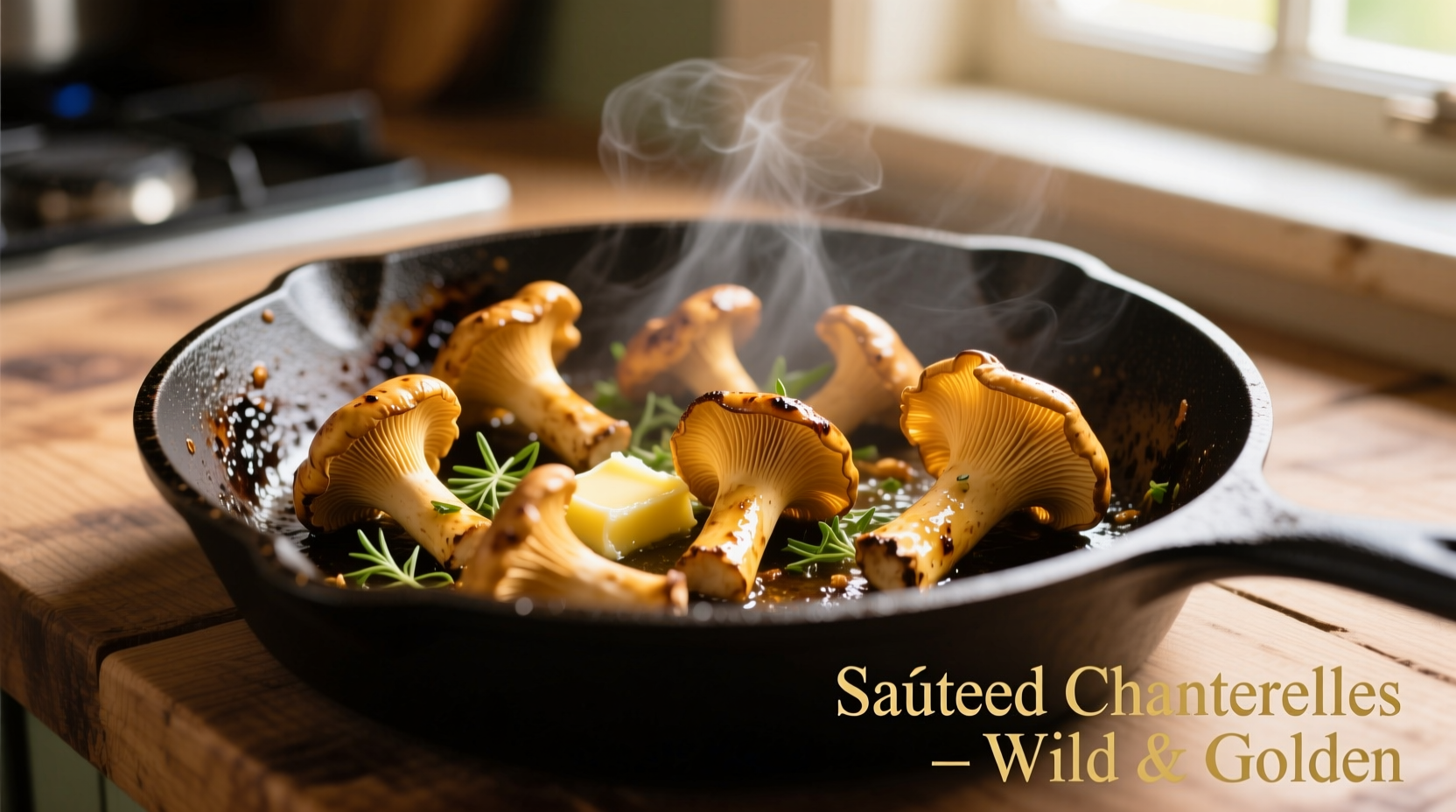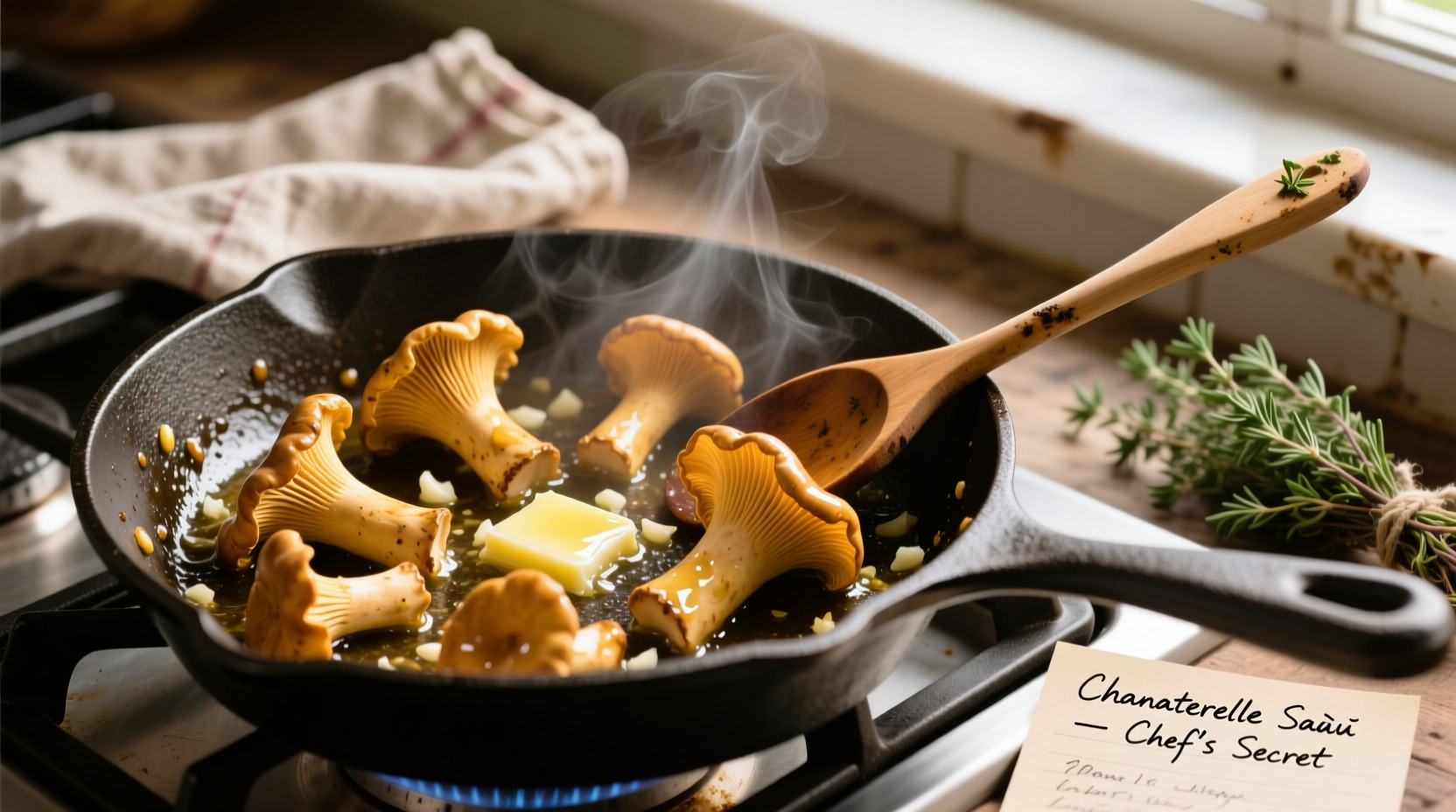Chanterelles require gentle sautéing in butter or oil over medium heat for 8-12 minutes until golden brown—they should never be boiled, which makes them rubbery. Proper cleaning is essential as dirt hides in their folds; use a soft brush and damp cloth instead of soaking. The best cooking methods preserve their delicate apricot-like aroma while enhancing their natural earthy flavor.
The Complete Guide to Cooking Chanterelles: Preserving Flavor and Texture
When you've foraged or purchased fresh chanterelles, knowing how to properly handle these prized mushrooms makes all the difference between a culinary delight and a disappointing meal. These golden treasures boast a distinctive apricot-like aroma and subtle earthy flavor that disappears with improper preparation. This guide provides professional techniques used by European chefs to maximize the unique qualities of chanterelles while avoiding common mistakes that ruin their delicate texture.
Why Chanterelles Demand Special Care
Unlike button mushrooms, chanterelles have a porous structure that absorbs water like a sponge. Soaking them destroys their texture and washes away flavor compounds. Their funnel-shaped caps trap forest debris that requires careful removal without damaging the fragile flesh. According to mycelium research from the US Forest Service, chanterelles form symbiotic relationships with tree roots, which contributes to their complex flavor profile that's difficult to replicate with other mushrooms.
Essential Cleaning Techniques for Perfect Chanterelles
Cleaning chanterelles properly is the most crucial step many home cooks get wrong. Follow these professional methods:
- Never submerge in water - This makes them waterlogged and ruins texture
- Use a soft mushroom brush to gently remove dirt from crevices
- Damp cloth method for stubborn spots - lightly wipe without soaking
- Cold water rinse only as last resort - then immediately pat dry with paper towels
- Inspect carefully for insects or larvae in the folds
After cleaning, spread mushrooms on a clean kitchen towel and let them air dry for 15-20 minutes before cooking. Properly dried chanterelles will develop that desirable golden crust when sautéed.

Optimal Cooking Methods for Chanterelles
Different cooking techniques yield dramatically different results with chanterelles. The table below compares professional approaches:
| Cooking Method | Time Required | Texture Result | Flavor Development |
|---|---|---|---|
| Sautéing in butter/oil | 8-12 minutes | Firm with golden crust | Enhanced earthy notes |
| Steaming | 5-7 minutes | Tender but can become soggy | Muted flavor |
| Roasting | 15-20 minutes | Concentrated, slightly chewy | Deepened umami |
| Boiling | 3-5 minutes | Rubbery and waterlogged | Flavor lost to water |
Professional Sautéing Technique for Perfect Results
The classic French method produces the best chanterelle preparation:
- Heat 1-2 tablespoons of butter or olive oil in a cast iron or stainless steel skillet over medium heat
- Wait until the fat is shimmering but not smoking (critical for proper searing)
- Add chanterelles in a single layer without crowding the pan
- Resist stirring for 3-4 minutes to allow proper browning
- Flip mushrooms gently and cook another 4-6 minutes until golden
- Add minced shallots during the last 2 minutes of cooking
- Finish with fresh thyme, a splash of white wine, and lemon juice
Crowding the pan creates steam that prevents browning—a common mistake highlighted in culinary research from University of Minnesota Extension. For best results, cook in batches if necessary.
Ideal Flavor Pairings for Chanterelles
Chanterelles complement specific ingredients that enhance rather than overwhelm their delicate flavor:
- Dairy elements - Crème fraîche, butter, or goat cheese
- Aromatic herbs - Thyme, tarragon, or chives (add at the end)
- Citrus accents - Lemon zest or a splash of white wine
- Protein partners - Chicken, pork, or eggs
- Grain bases - Wild rice, polenta, or egg noodles
Avoid strong spices like garlic (use sparingly) or heavy sauces that mask chanterelles' subtle flavor. As documented in European culinary traditions, the simplest preparations often showcase chanterelles best.
Storage Tips for Maximum Freshness
Fresh chanterelles deteriorate quickly. To extend their shelf life:
- Store in a paper bag (never plastic) in the refrigerator
- Place a dry paper towel in the bag to absorb moisture
- Use within 2-3 days for best quality
- Never wash before storage—clean immediately before cooking
- For longer storage, sauté briefly then freeze in portions
Safety Considerations When Cooking Chanterelles
While true chanterelles (Cantharellus cibarius) are safe to eat, proper identification is crucial. The Centers for Disease Control and Prevention warns that some chanterelle look-alikes like the toxic jack-o'-lantern mushroom (Omphalotus olearius) cause severe gastrointestinal distress. Always:
- Confirm identification with an expert if foraging
- Look for chanterelles' distinctive forked, ridged undersides (not true gills)
- Ensure they have a fruity, apricot-like aroma
- Cook thoroughly—never eat raw chanterelles
Properly identified and prepared chanterelles pose no health risks and offer nutritional benefits including vitamin D and antioxidants.
Common Mistakes to Avoid When Cooking Chanterelles
Even experienced cooks make these errors that compromise chanterelle quality:
- Overcrowding the pan - Creates steam instead of searing
- Adding salt too early - Draws out moisture preventing browning
- Using high heat - Burns delicate mushrooms before they cook through
- Boiling or steaming - Makes them rubbery and washes away flavor
- Overcooking - Results in leathery texture instead of tender-firm
Remember that chanterelles continue cooking slightly after removal from heat, so take them off the stove when they're just shy of perfect.
Simple Chanterelle Recipe to Try Tonight
For an authentic French-style preparation that showcases chanterelles' natural beauty:
- Clean 1 pound fresh chanterelles using the brush method
- Heat 2 tablespoons butter in skillet over medium heat
- Add mushrooms in single layer; cook undisturbed 4 minutes
- Flip and cook 5 more minutes until golden
- Add 1 minced shallot and cook 2 minutes
- Finish with 2 tablespoons crème fraîche, 1 tsp fresh thyme, and lemon juice
- Serve immediately over toasted baguette slices
This preparation highlights why chefs consider chanterelles the "foie gras of mushrooms"—their luxurious texture and complex flavor need minimal enhancement.
Frequently Asked Questions
Can you eat chanterelles raw?
No, chanterelles should never be eaten raw. While not toxic when raw, they're difficult to digest and lack the developed flavor that proper cooking provides. Sautéing or roasting enhances their natural apricot-like aroma and makes their nutrients more bioavailable.
How long should chanterelles cook for optimal texture?
Chanterelles need 8-12 minutes of sautéing over medium heat for perfect texture. Cook undisturbed for the first 4 minutes to develop a golden crust, then stir occasionally until they're tender but still slightly firm. Overcooking makes them rubbery, while undercooking leaves them unpleasantly chewy.
What's the best oil for cooking chanterelles?
Butter or a combination of butter and neutral oil (like canola) works best for chanterelles. The milk solids in butter create superior browning, while the oil prevents burning. Extra virgin olive oil can be used but has a lower smoke point. Avoid strongly flavored oils that would compete with the mushrooms' delicate taste.
How can you tell if chanterelles have gone bad?
Bad chanterelles become slimy, develop dark spots, and emit a sour or ammonia-like odor. Fresh chanterelles should feel firm with a pleasant earthy-apricot aroma. If they've developed any sliminess or unpleasant smell, discard them immediately as spoiled mushrooms can cause foodborne illness.
Can you freeze chanterelles for later use?
Yes, but only after partial cooking. Clean and sauté chanterelles until just tender, then spread on a baking sheet to freeze individually before transferring to airtight containers. Raw frozen chanterelles develop ice crystals that destroy their delicate texture. Properly frozen chanterelles maintain quality for 6-8 months.











 浙公网安备
33010002000092号
浙公网安备
33010002000092号 浙B2-20120091-4
浙B2-20120091-4